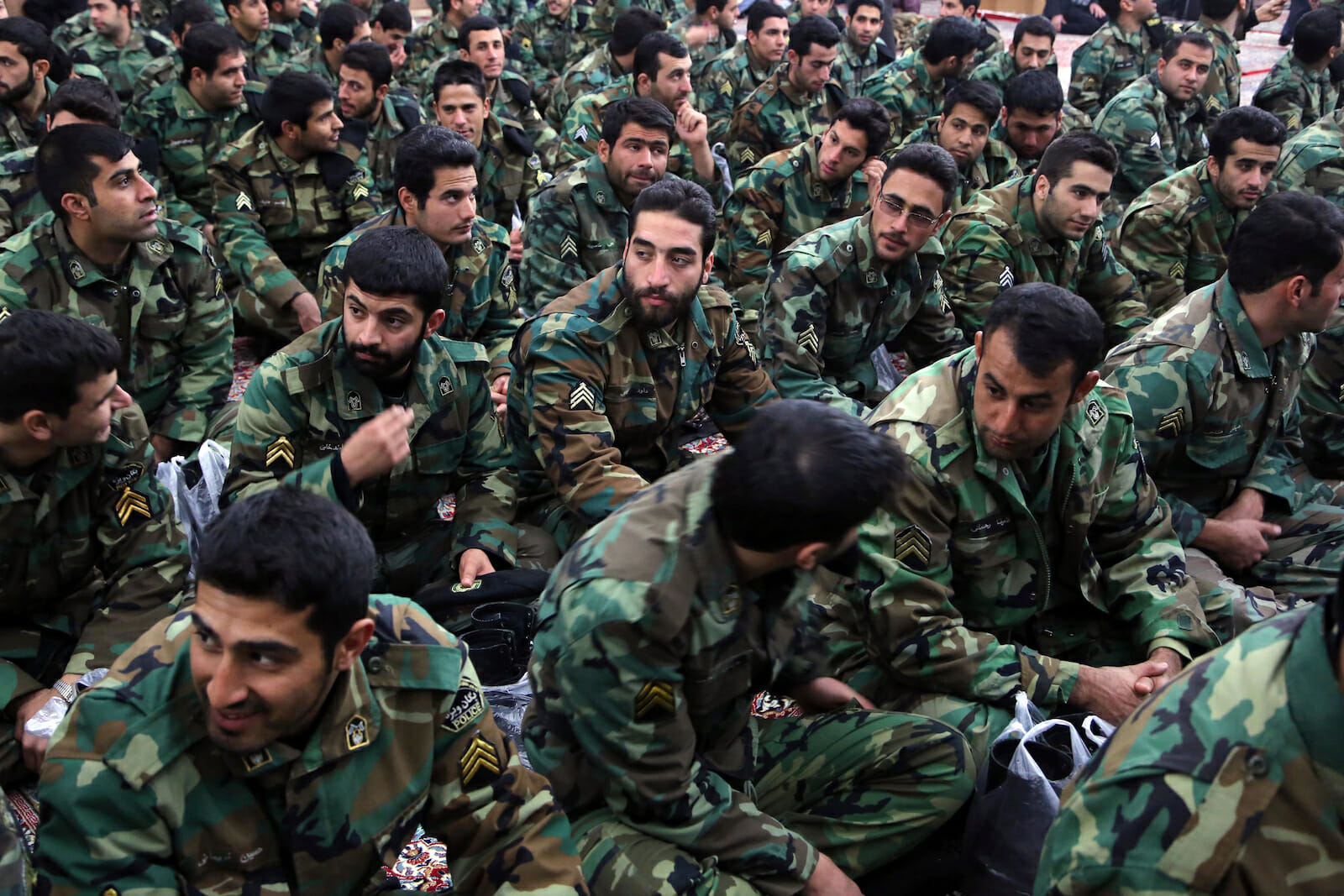
The Pentagon’s Assessment of Iran’s Military Capabilities
On November 19th, the U.S. Defense Intelligence Agency (DIA), one of the U.S. Department of Defense’s intelligence arms published an unclassified report that “examines the core capabilities” of Iran’s military power, including Tehran’s “intent, capabilities, organization’s structure and capabilities” of the Iranian military. While it was the first time that the Defense Intelligence Agency has published this specific report on Iran’s military, it did recently publish reports on both Russia and China in 2017 and early 2019 respectively as part of the Military Power Series.
According to a statement issued by a senior official from the Defense Intelligence Agency, the Iranian military, in particular, the Islamic Revolutionary Guard Corps and the Artesh “project its military power” in order to serve two strategic interests, “first, the survival of the regime and second securing a dominant position in the region.” However, since the U.S. war in Afghanistan and Iraq, the Iranian doctrine adjusted “to better deter and counter threats” from technologically advanced adversaries, like the United States and Israel as the document indicated by “emphasizing asymmetric tactics.”
The timing of the report is significant, as the U.S. and Iran have come close to a major conflict recently when Iran shot down an American RQ-4 Global Hawk Drone over the Straits of Hormuz in late June along with several sabotage operations against oil tankers from Europe, Japan, and the United Arab Emirates. Recently Saudi Arabia’s oil facilities in Abqaiq were also attacked by cruise missiles and drones, that have originated from Iran, which pressed the Pentagon to deploy more troops to the Middle East in an effort to “buttress our efforts at deterrence” as Secretary of Defense Mark Esper has emphasized in a recent testimony from the U.S. House Armed Services Committee and more force deployment is under consideration.
The 130-pages document provides a helpful and readable summary of the threat perceptions, doctrine and strategy, and capabilities of the Iranian armed forces. According to Lt. General Robert P. Ashley Jr., the Director of the Defense Intelligence Agency, as Tehran continues to expand both its capabilities and role in the region “it is more important than ever that we understand Iran’s military power and the threat it poses to our interests, our allies, and our own security,” and this informative report helps offers readers an opportunity to understand the nature of the Iranian military, its capabilities, and the role it seeks to play in a turbulent Middle East.
On the Iranian way of war, the statement mentioned how Iran employs a “hybrid approach to warfare” by combining both conventional and unconventional elements of warfare to confront its adversaries and achieve its interests. This is not surprising as Iran has been employing those tactics to achieve its strategic aims for a long time, through its partners and proxies in the region, from the Red Sea to the Mediterranean while avoiding retaliation by deterring its adversaries through both its conventional and unconventional arsenal. Through its unconventional forces, Tehran “advances its interests in the region and attains a strategic depth” from its adversaries as the report noted.
The report also suggested that this strategy is “unlikely to change in the near term” as long as relations between the U.S. and Iran are frosty. This is important, as the Trump administration has withdrawn from the Iran nuclear deal last year, and reimposed sanctions against Iran unilaterally, in an effort to reach a new deal with Iran that addresses other threats that Tehran poses to U.S. interests, including Iran’s unconventional arsenal of partners (e.g. the Houthis in Yemen) and proxies (e.g. Hezbollah in Lebanon), which do threaten U.S. interests or its partners in the Middle East.
However, the report has not mentioned the changes in the “Iranian way of war” following Iran’s intervention in Syria to pop up the Bashar al-Assad regime and the lessons that the Iranian military took from the war. This intervention was costly both in terms of blood and treasure for Iran and challenged how the Iranian military has operated since the end of the Iran-Iraq war three decades ago – a war that continues to shape the strategic thought of top Iranian commanders. As Ariane Tabatabai from the Rand Corporation noted, since 1988 Iran “limited the scope of its foreign interventions to assistance and advice” as it lacked “significant conventional military capabilities.” But in Syria, it had to deploy its own combat troops as well as other proxy allies from Lebanon and Iraq to prevent the Assad government from collapsing.
The report did divide the capabilities that the Iranian military relies on into three core capabilities: developing the largest ballistic missile forces in the Middle East as a “strategic deterrent” due to the limitations of Iran’s air power, the maritime forces capable of “threatening navigations” in the Persian Gulf and the Strait of Hormuz and also its unconventional means of using its partners and proxies in the region to achieve its strategic intentions.
The report includes a breakdown of Iran’s ballistic and cruise missiles, including estimates of Iran’s short-range ballistic and cruise missiles as well as the propellant types. Iran still lacks an intermediate-range ballistic missile (IRBM) as well as an intercontinental ballistic missile, although the report did emphasize Tehran’s desire to develop a Space Launched Vehicle (SLV) which could “shorten a pathway to an ICBM” as both ICBMs and SLVs do use “similar technologies,” despite the fact that the relationship between the two is sometimes overstated. Iran’s SLV launched consecutive failures in 2019 which have recently been on the news and were setbacks to the country’s space program. The document does however predict that Iran will deploy “more accurate and lethal theatre ballistic missiles” and pursue “technical capabilities to produce an ICBM.” On cyberspace, the report highlights Iran’s underdeveloped cyber capabilities compared to China and Russia, but the document reported several high cyber incidences that originated from Iran, including cyber-attacks against Saudi Aramco and Qatari RasGas as well as U.S. financial institutions during the 2012-2013 period.
The report does warn about Iran’s ability to purchase modern conventional weapons from both China and Russia in the near future, including developing advanced defensive and offensive airpower in an effort to rebuild its military, although financial constraints will “challenge Iran’s modernization programs.” Currently, Iran is not able to purchase foreign military equipment as it is under a UN embargo that ends in 2020. But before the embargo expires, Iran has already developed close military cooperation with both Beijing and Moscow, including conducting joint naval exercises in the Indian Ocean. Iran and Russia have also close military partners in Syria in support of President Assad and Tehran who had recently requested Beijing to further cooperate with Iran in the area of production of destroyers and submarines. Although the current economic crisis may delay Iran’s prospect of acquiring high-tech military equipment after 2020, it is highly likely that it will boost Iran’s air force in particular and reduce its need to lean on ballistic missiles.
The report also noted how the Iranian regime views national security, not only through the defense and security lenses but also “political, cultural and social dynamics” as those domains could have an impact on the clerical regime’s long-term survival capacity – which it might fail to grasp. This is especially important as there were recent demonstrations in the streets of Tehran that resulted in the death of dozens of Iranian citizens and compelled the government to cut off the internet for several days. There are more interesting issues that are discussed in the report, that I have not raised here, including the organizational structure of the Iranian military, command, and control, Iran’s intelligence capabilities, its limited expeditionary warfare capabilities, development of advanced UAVs – primarily for intelligence, reconnaissance, and surveillance (ISR) operations and underground facilities, etc.

